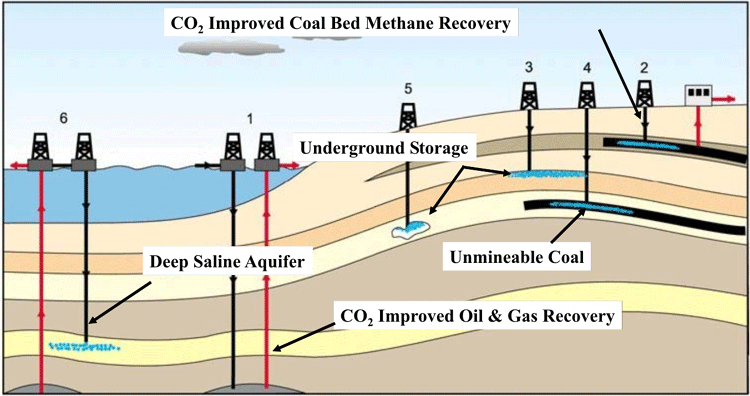 |

|
Kansas Geological Survey Open-file Report 2003-33 |
Geologic Options for CO2 Sequestration

Modified from http://www.spacedaily.com/news/greenhouse-00j.html
MIDCARB concentrates on the geographic distribution and technical aspects of geologic storage options for CO2 sequestration, including those that recycle carbon back to its source in natural geologic formations. These include CO2 storage in geologic structures such as oil and gas reservoirs, coal seams, and saline aquifers. Producing oil reservoirs, using CO2 miscible and immiscible flooding, offer some of the most attractive targets for CO2 sequestration.
Saline aquifers have great potential capacity for the long-term sequestration of greenhouse gas emissions including CO2. All MIDCARB states have extensive saline aquifers that have high potential for aquifer disposal of CO2. Many of these aquifers form a continuous regional hydrodynamic system with known oil and gas reservoirs (e.g., Arbuckle Group in Kansas, and the Hunton Aquifer of the Ohio Valley and Illinois Basin).
|
|
Last updated June 2003
http://www.kgs.ku.edu/PRS/publication//2003/2003-33/P1-03.html